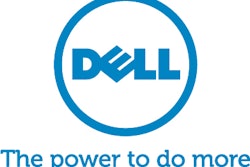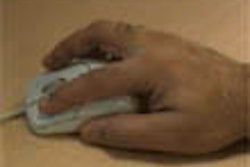Taking nighthawk services a step further, a pilot study has explored the feasibility of having an international teleradiology staffing model. The model has the advantage of increasing staffing flexibility in addition to substituting a day shift of radiologic procedures for what is considered a night shift for radiologists in the U.S.
Dr. Arjun Kalyanpur and his colleagues from the Yale University School of Medicine conducted a three-month study (Radiology Online, August 22, 2004, Vol. 232:2, pp. 415-419) that examined a teleradiology staffing model between Yale-New Haven Hospital, U.S, and a staff radiologist based in Bangalore, India.
"In addition to facilitating subspecialty consultations and emergency coverage of imaging services, off-site radiologists may also be used in diagnostic imaging departments to address personnel requirements," stated the study authors.
The authors, however, admit a certain level of resistance is expected in the initial implementation of the model. They believe that greater acceptance of the new technology and teleradiology protocols will come from increased use of teleradiology in medical centres and increased numbers of validation studies published in literature.
In this context, the study addresses some of the critical areas of concern in implementing teleradiology: technical issues, performance issues, and most importantly, security issues.
For the purpose of the study, 216 CT body scans originating from Yale-New Haven Hospital were selected for primary interpretation through teleradiology by the staff radiologist based in the satellite reading centre at Bangalore. The scans were of chest and abdomen, abdomen and pelvis, or chest, abdomen and pelvis for which primary interpretation could be deferred for at least 12 hours.
Apart from the staff radiologist doing the remote interpretation, the project team at the satellite reading centre consisted of a clinical administrator, technical director, project data coordinator (PDC), and quality assurance coordinator (QAC).
The staff radiologist had worked at Yale-New Haven for a year and completed radiology residency and neuroradiology fellowship there before moving to the satellite reading centre in India. Even after relocating to India, he maintained his U.S state licensure and appointment at the institution, and remained current on its imaging protocols and practices by returning to work at Yale-New Haven for short periods.
Teleradiology at work
The cases selected for the pilot study were 21-818 CT images with each case consisting of an average of 132 images. The scans were done on a GE LightSpeed four-detector-row scanner or a GE CT/i single-section scanner (GE Medical Systems, Waukesha, WI, U.S.). About two to eight cases were transmitted each day from the picture archiving and communication system (PACS) workstation (Autorad; Kodak, Fremont, CA, U.S.) to a local Web-based image server (Encrypted Telemedicine RaQ; Medweb, San Francisco, CA, U.S.), and from there on for lossless encrypted transmission to an identical server at the satellite reading centre.
The images were then transferred from the server to a personal computer (Compaq Presario, Intel Pentium III; Dell, Round Rock, TX, U.S.) and viewed on a 19-inch monitor with 1024 x 768 maximum spatial resolution at 32-bit colour and 100 MHz refresh rate settings for interpretation. The case report was generated and transcribed using a combination of voice recognition software (Dragon Systems; Lernout and Hauspie, Newton, MA, U.S.) and structured format reporting (customised by the staff radiologist).
After all the cases for the day were interpreted, the reports were uploaded to the hospital's radiology information system and made available before 8 a.m. Eastern time. Urgent and clinically important findings were reported immediately to the referring physician by fax. Interestingly, fax reporting was required in 54 of the 216 cases, or 25% of the cases, in the pilot study.
Quality control
Quality control measures included structured communication between the project members on a daily basis. The PDC verified if all cases were successfully transmitted by double-checking records of the image data delivery. The QAC double-checked with the referring physicians to ensure no case reports were missing.
An encrypted mail informed the staff radiologist of the transmission date, medical record numbers, and image count data for the transmitted scans for the day. After interpretation, the staff radiologist sent an e-mail notification to the project members at Yale-New Haven on the cases that were reported and faxed.
Routine technical maintenance and testing of the teleradiology network was done, and technical support was available 24 hours a day for troubleshooting problems. During the pilot, complications were observed in two instances leading to transmission downtime. However, backup measures were available, and secure transfer and viewing of the images was made possible directly from the local Web server using 128-bit secure socket layer encryption (Netscape, Mountain View, CA, U.S.).
Other requirements
Apart from the technical requirements, other concerns with an international staffing model include credentialing requirements, certification and state licensure, and malpractice.
"The feasibility of a clinical operation of this nature is contingent on the remote site radiologist being U.S. board-certified, state-licensed, and credentialed at the institution where the images originate," the authors added.
These concerns were easily addressed in the pilot study because the remote radiologist was a faculty member at the institution, having completed both residency and fellowship training there.
By N. Shivapriya
AuntMinnieIndia.com staff writer
August 9, 2004
Copyright © 2004 AuntMinnie.com


















